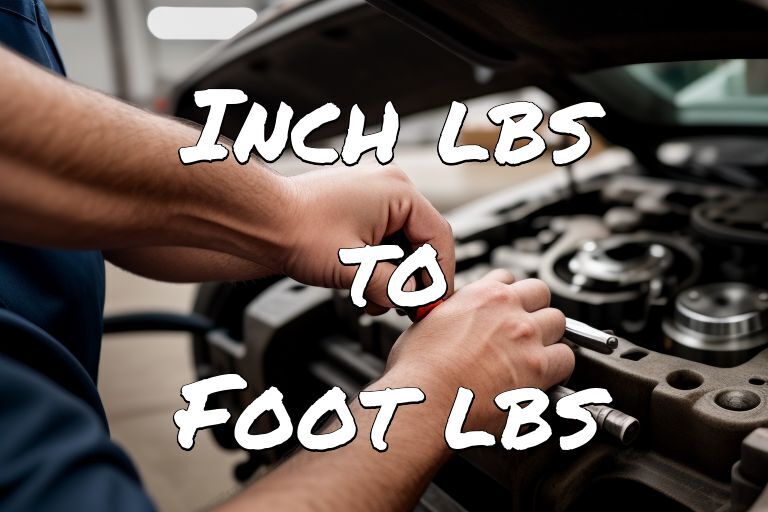Inch lbs to Foot lbs Converter
The LRFIX Inch-Pounds to Foot-Pounds Converter allows quick conversions between in-lb to ft-lb. One foot-pound equals 12 inch-pounds.
Inch lbs to Foot lbs Converter
Enter the value you have (inch-lbs or foot-lbs) and the other box will instantly give you the converted value. Simple.
Conversion Formula
One foot-pound (ft-lb) = 12 inch-pounds (in-lbs). The key measurement factor is 12.
- To convert from foot-pounds (ft-lbs) to inch-pounds (in-lbs), you multiply by 12.
- To convert from inch-pounds (in-lbs) to foot-pounds (ft-lbs), you divide by 12.
Example: 25 Inch lbs in foot lbs is 2.0833 ft-lbs. Divide Inches by 12 to get the foot value. Similarly, multiply foot value by 12 to get inches. 1.5 ft-lbs is 18 inch-lbs (1.5 x 12 = 18)
Inch-Pounds to Foot-Pounds Chart
| Inch-Pounds (in-lbs) | Foot-Pounds (ft-lbs) |
|---|---|
| 1 in-lb | 0.083 ft-lb |
| 2 in-lbs | 0.167 ft-lb |
| 3 in-lbs | 0.25 ft-lb |
| 4 in-lbs | 0.333 ft-lb |
| 5 in-lbs | 0.417 ft-lb |
| 6 in-lbs | 0.5 ft-lb |
| 7 in-lbs | 0.583 ft-lb |
| 8 in-lbs | 0.667 ft-lb |
| 9 in-lbs | 0.75 ft-lb |
| 10 in-lbs | 0.833 ft-lb |
| 11 in-lbs | 0.9167 ft-lbs |
| 12 in-lbs | 1 ft-lb |
| 13 in-lbs | 1.0833 ft-lbs |
| 14 in-lbs | 1.1667 ft-lbs |
| 15 in-lbs | 1.25 ft-lbs |
| 16 in-lbs | 1.3333 ft-lbs |
| 17 in-lbs | 1.4167 ft-lbs |
| 18 in-lbs | 1.5 ft-lbs |
| 19 in-lbs | 1.5833 ft-lbs |
| 20 in-lbs | 1.6667 ft-lbs |
| 21 in-lbs | 1.75 ft-lbs |
| 22 in-lbs | 1.8333 ft-lbs |
| 23 in-lbs | 1.9167 ft-lbs |
| 24 in-lbs | 2 ft-lbs |
| 36 in-lbs | 3 ft-lbs |
| 48 in-lbs | 4 ft-lbs |
| 60 in-lbs | 5 ft-lbs |
| 72 in-lbs | 6 ft-lbs |
| 84 in-lbs | 7 ft-lbs |
| 96 in-lbs | 8 ft-lbs |
| 108 in-lbs | 9 ft-lbs |
| 120 in-lbs | 10 ft-lbs |
| 144 in-lbs | 12 ft-lbs |
| 180 in-lbs | 15 ft-lbs |
| 240 in-lbs | 20 ft-lbs |
| 300 in-lbs | 25 ft-lbs |
| 360 in-lbs | 30 ft-lbs |
| 480 in-lbs | 40 ft-lbs |
| 600 in-lbs | 50 ft-lbs |
| 1200 in-lbs | 100 ft-lbs |

